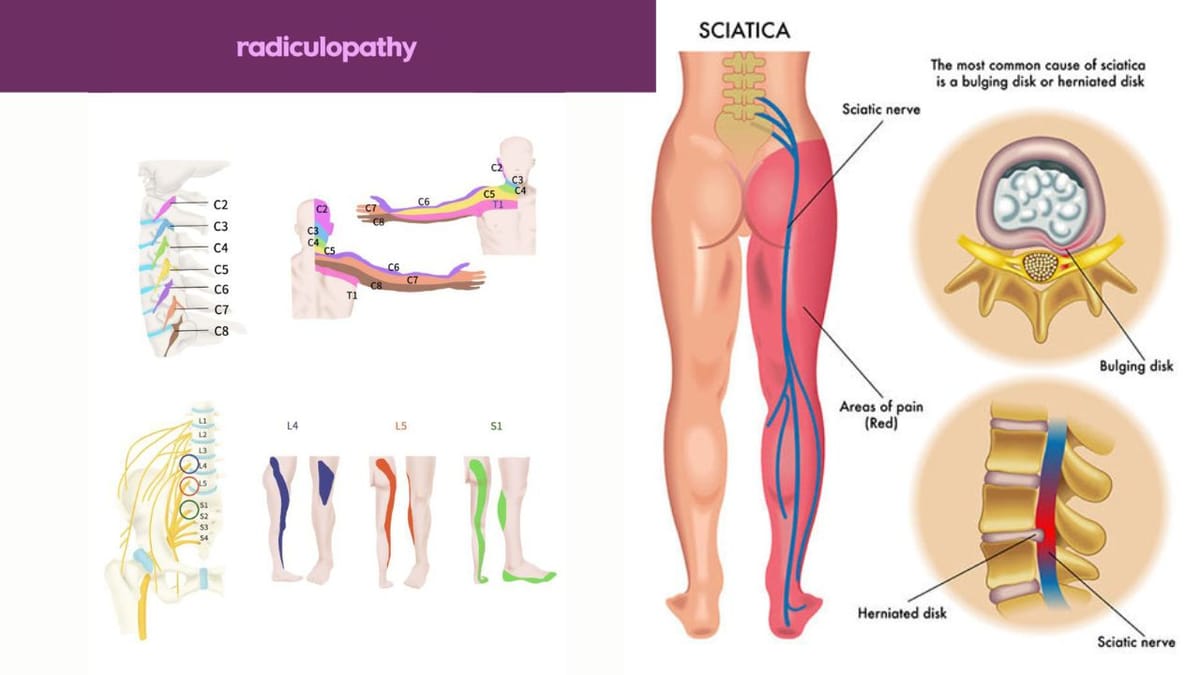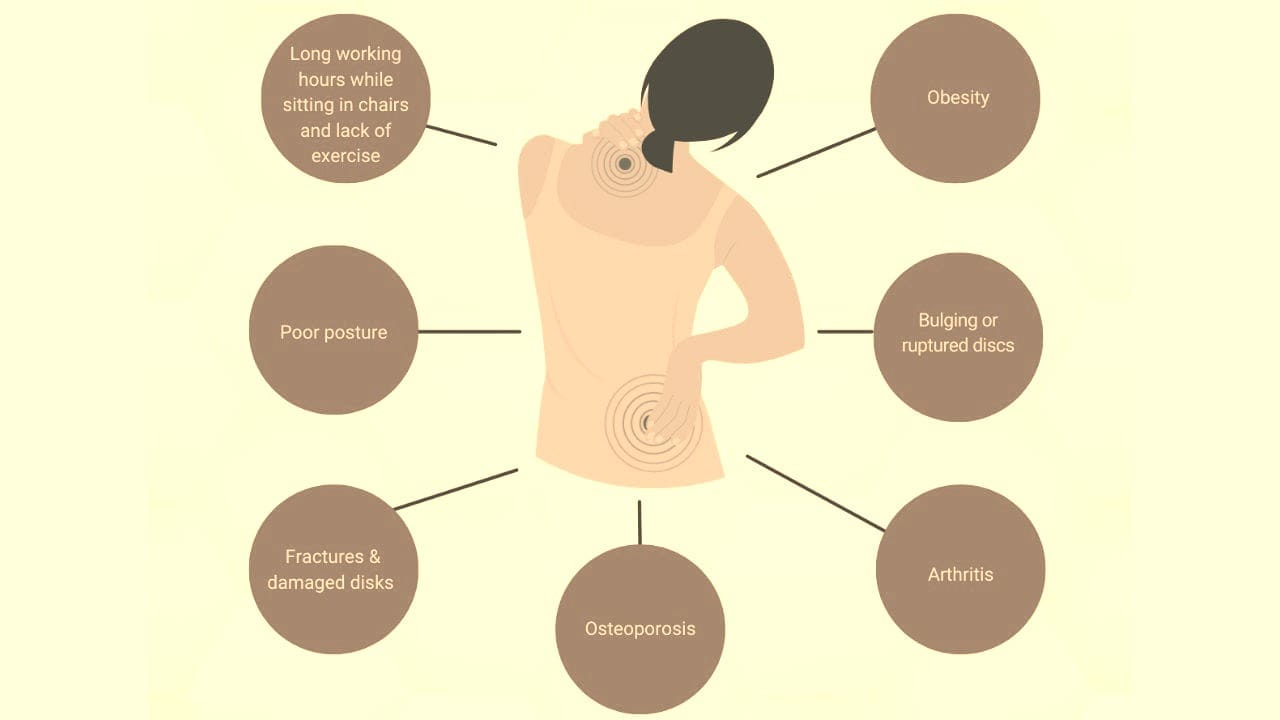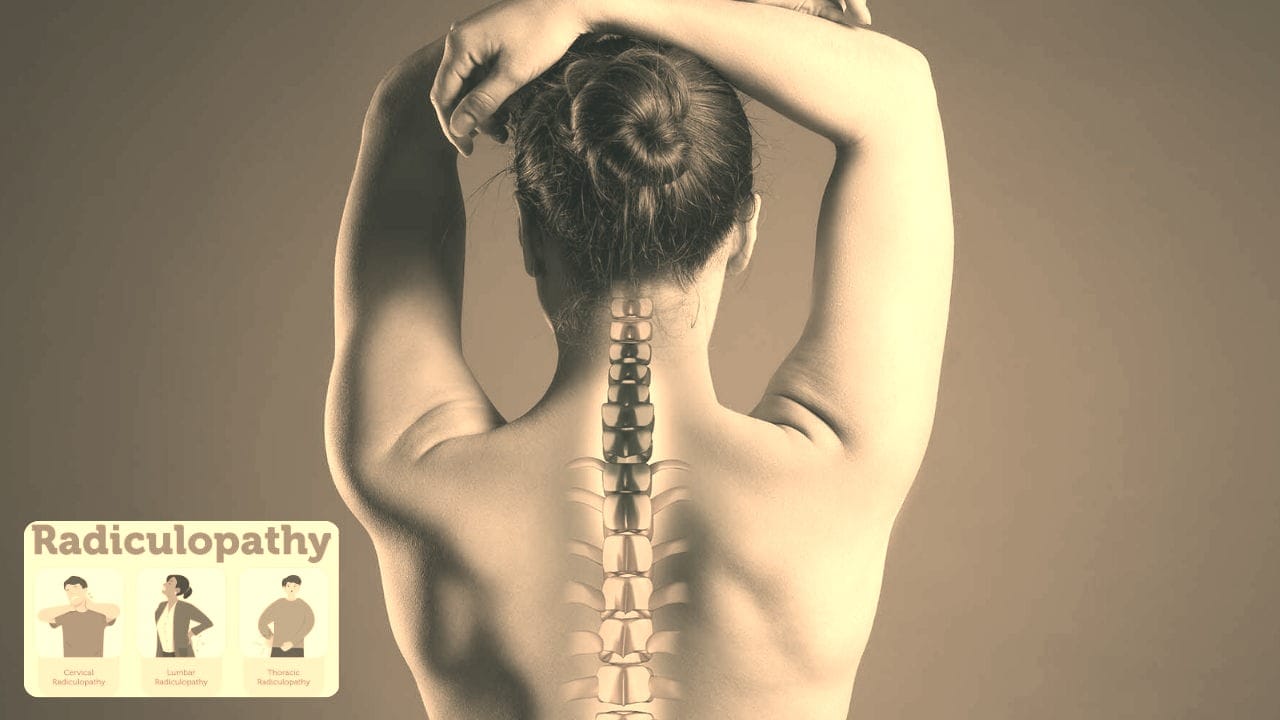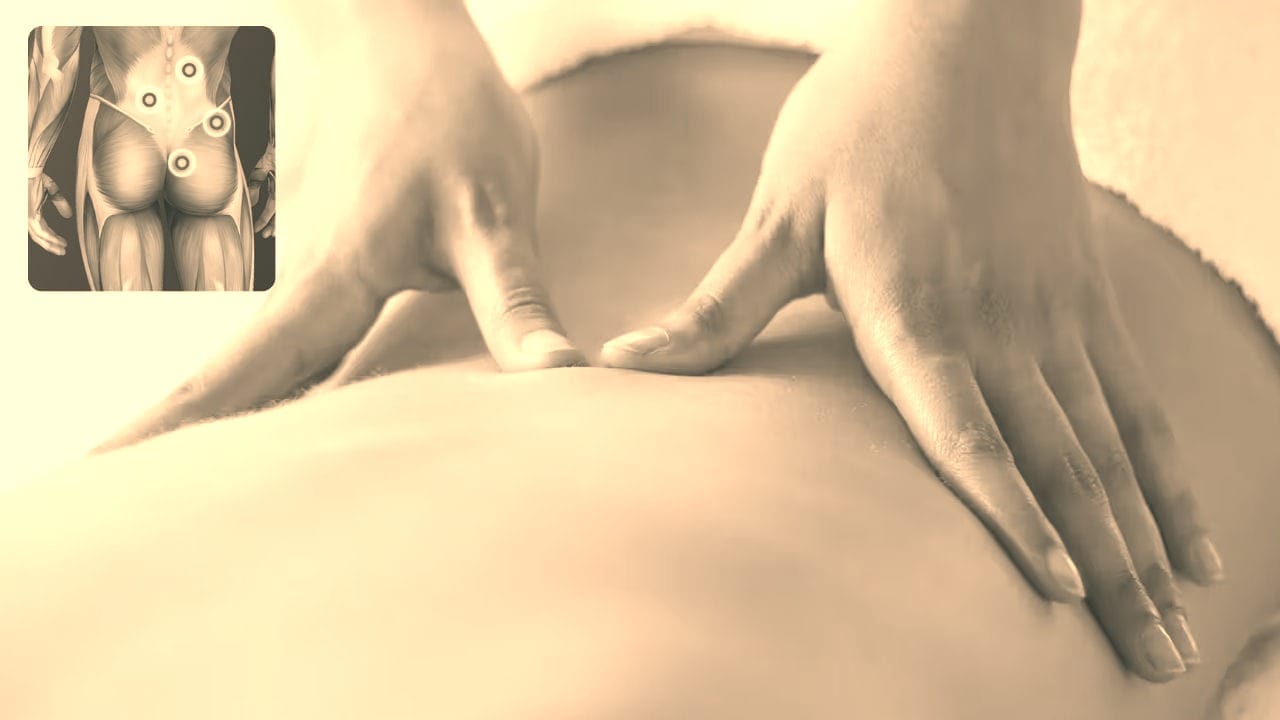Sciatica vs. Radiculopathy: Diagnosis Causes & Treatments
Sciatica and radiculopathy both cause nerve pain, but they’re not the same. Learn the key differences, causes, and best treatments for relief.

Sciatica and radiculopathy are both conditions related to nerve compression but affect different areas of the body. Sciatica is specifically associated with the sciatic nerve and typically causes pain that radiates from the lower back down to the legs.
What is Sciatica?
Sciatica is a term used to describe the symptoms of leg pain—and possibly tingling, numbness, or weakness—that originate in the lower back and travel through the buttock and down the large sciatic nerve in the back of the leg.
It's a symptom of an underlying condition, not a diagnosis. This condition is often the result of a herniated disc, bone spur, or spinal stenosis compressing part of the nerve.
The pain associated with sciatica can vary widely. It might feel like a mild ache, a sharp, burning sensation, or severe discomfort.
It can also cause feelings of numbness, weakness, and tingling. Sciatica typically affects only one side of the body but can occasionally affect both.
What is Radiculopathy?
Radiculopathy, on the other hand, is a broader term that refers to any condition affecting the spinal nerve roots. This can include compression due to herniated discs, degenerative disc disease, or spinal stenosis.
Radiculopathy can cause pain, numbness, or weakness in the area of the body that the affected nerve serves.
Unlike sciatica, which is specific to the sciatic nerve and the lower body, radiculopathy can occur in any part of the spine: cervical (neck), thoracic (mid-back), or lumbar (lower back).
The symptoms of radiculopathy depend on where the nerve compression occurs and can affect different parts of the body accordingly.
Causes of Sciatica
The most common cause of sciatica is a herniated disc in the lumbar spine that presses on the sciatic nerve.
Other causes include spinal stenosis, which is a narrowing of the spinal canal that puts pressure on the nerves, and piriformis syndrome, where the piriformis muscle irritates the sciatic nerve.

Less commonly, sciatica can be caused by conditions such as spondylolisthesis, where one vertebra slips over another, or by tumors compressing the sciatic nerve.
Causes of Radiculopathy
Radiculopathy is caused by compression or irritation of one or more nerve roots in the spinal column.
This can be due to a herniated disc, degenerative changes in the spine, bone spurs, or spinal stenosis. In the cervical spine, radiculopathy is often caused by degenerative disc disease or a herniated disc.

In contrast, in the lumbar spine, it can be caused by similar conditions that lead to sciatica.
Comparison
The symptoms of sciatica and radiculopathy can be quite similar, but there are key differences.
Sciatica typically causes pain that radiates along the path of the sciatic nerve, from the lower back through the buttocks and down the legs. It can also cause muscle weakness in the affected leg and reflex changes.
Radiculopathy symptoms, while also including pain, may be more localized to the area of the affected nerve root.
For example, cervical radiculopathy may cause pain and weakness in the neck, shoulders, arms, and hands, while lumbar radiculopathy may cause symptoms in the lower back, hips, and legs.
Diagnosis of Sciatica and Radiculopathy
Diagnosing sciatica and radiculopathy involves a physical examination and the patient's medical history.
A doctor will check for pain and weakness in certain body areas, as well as test reflexes and muscle strength.
Imaging tests such as X-rays, MRI scans, and CT scans can help pinpoint the exact location and cause of the nerve compression.
Treatment Options
Treatment for both sciatica and radiculopathy typically starts with conservative methods such as physical therapy, medication, and injections. Physical therapy can help strengthen the muscles around the spine and improve flexibility, while medications like NSAIDs can reduce inflammation and pain.
Various treatments are available for radiculopathy, including activity modification to avoid nerve irritation. Medications like acetaminophen and ibuprofen can ease pain, while physical and chiropractic therapy effectively addresses lower back issues. Steroid injections target inflammation around the irritated nerve.

Surgery, particularly for L5 or S1 radiculopathy, becomes an option if conservative treatments fail or there's significant weakness like foot drop. Early intervention is crucial for a better chance of full recovery in such cases
If conservative treatments fail, surgery may be considered to relieve nerve compression.
Summary
Sciatica and radiculopathy are conditions that stem from nerve compression but differ in their specific nerve involvement and symptom distribution. Sciatica is exclusive to the sciatic nerve and typically presents with radiating leg pain, while radiculopathy can affect any spinal nerve root and cause symptoms in the corresponding body area. Diagnosis often involves a physical exam and imaging, with treatment ranging from conservative methods to surgery. Preventative measures focus on a healthy lifestyle and proper body mechanics.
FAQ Section
Q 1: What is the Difference Between Sciatica and Radiculopathy?
A: While sciatica and radiculopathy share similarities, they refer to different conditions. Sciatica is a symptom, not a diagnosis. It occurs when the sciatic nerve, which extends from the lower back down the legs, is irritated or compressed.
On the other hand, radiculopathy is a broader term that encompasses any condition affecting the spinal nerve roots. Sciatica is a specific type of radiculopathy, commonly associated with compression or irritation of the sciatic nerve.
Q 2: What are the Common Causes of Sciatica and Radiculopathy?
A: Sciatica and radiculopathy can both result from herniated discs, spinal stenosis, or bone spurs pressing on nerve roots. The key difference lies in the terminology and the location of the irritation.
Sciatica specifically involves the sciatic nerve, often causing pain, numbness, or tingling that radiates down the leg. Radiculopathy is a broader term encompassing nerve root compression anywhere along the spine, potentially causing symptoms in various regions depending on the affected nerve.
Q 3: What are the Common Symptoms and Treatments for Sciatica and Radiculopathy?
A: Symptoms of both sciatica and radiculopathy may include pain, numbness, tingling, or weakness. Sciatica tends to manifest as radiating pain from the lower back down the leg. Treatment for both conditions often begins with conservative measures such as rest, physical therapy, and anti-inflammatory medications.
If symptoms persist, more advanced options like epidural steroid injections or surgical interventions may be considered. It's crucial to consult with a healthcare professional for an accurate diagnosis and personalized treatment plan based on the specific underlying cause.
